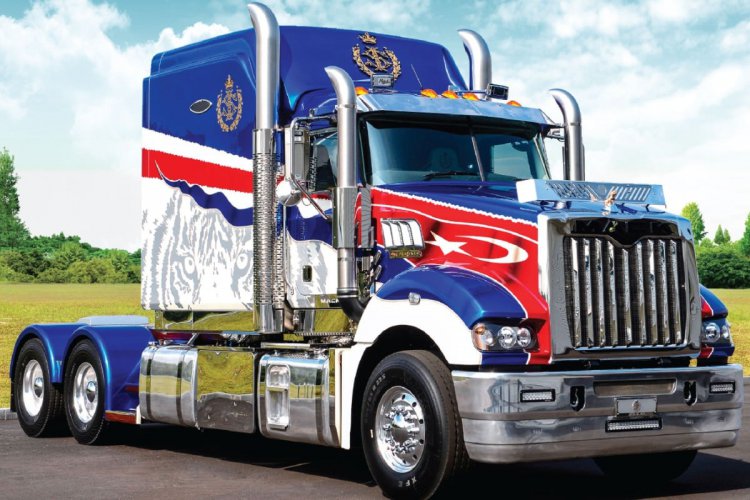Author, Stefan Pertz – Editor Asian Truckers / Asian Buses
Sometimes, the market needs to be presented with a product it didn’t know it needed. The story (so far) of Asian Trucker shows how an easy task could lead to much bigger things.
Asian Trucker just celebrated its 10-year anniversary. Looking back at a decade of publishing and brand building, it may be hard to believe that the business originated from a happenstance meeting at a networking event. Branching out from under the wings of a brand consultancy, the title has since earned more than just a reputation of being the leader in the market. Here is the story so far – a story guided by marketing principles.
Guiding Principle. “Marketing is the process used to determine what products or services may be of interest to customers and the strategy to use in sales, communications and business development,” (Kotler et al. 1996) – this was the focus of new client acquisition for a small brand consultancy. Going to networking events, asking people where their problems in marketing and advertising were and from there, packaging solutions to address these problems. One prospect said, “I have the licence to sell lubricants for commercial vehicles. Sales are ok, but I think we can do better. What would you suggest?”
In the following meeting, it was suggested to place ads in magazines that deal with commercial vehicles. Targeted and specific, editorial content was to be tied to the placements of messages by the lubricant distributor. After all, this would be the place where truckers would do their marketing in the search of better suppliers, products and services.
No Such Thing! Knowing that there are a good dozen magazines in the region that deal with concrete (yes, the building material that is moved by trucks to construction sites), it came very much as a surprise that there were no magazines that dealt with commercial vehicles. “Could there be others out there who would be placing ads for their brands in a truck magazine, should it exist?” was the question that again derived from Kotler’s definition of marketing.
The idea for a trucking magazine was born and the team went out to check with other brands if there was such a need. And indeed, one had found a niche, a void no one had thought of filling till that day. Controlling cost and being ambitious in signing advertisers resulted in even the first issue turning a profit! Apparently, many others had the same problem: nowhere to go to talk about new products, publish opinion pieces, feature their new bosses or place ads to hire staff for this industry.

Trust and Confidence. Initially, the magazine was to be a project for the brand consultancy. Not having a media kit, previous samples to show or even business cards, building trust and confidence was an issue. To overcome the resistance of advertisers to sign on the line, payment terms were offered. Advertisers would only be billed once the magazine was published. As people would only pay upon delivery, they were happy to commit to placing ads. At the same time, suppliers were managed in a manner that allowed for the cash from ads to come in first before bills were paid.
In terms of confidence, it was crucial to quickly get to grips with the subject matter. Initially, articles were contracted to people in the industry, thus lending credibility to the title. In the meantime, the editorial team soaked up what they could to learn as fast as possible about nomenclature, structures, dealings and how commercial vehicles operate. Questionnaires were deployed to find out what the audience wanted to know about (remember… marketing).
Being neutral is also very important and the editorial team maintains that it is the stories that drive the success. Other publications may take the view that one has to place an ad in order to get coverage for a brand. Not so with Asian Trucker. If it is deemed interesting for the readers, it will be published. Being seen as non-biased has helped open doors to government agencies and other institutions that not only involve the Truckers in publications, but sometimes even ask for help.
Regional Problem. What turned out to be a void in the Malaysian market was a phenomenon that repeated itself: looking at markets north and south, there were no publications dealing with the commercial vehicle industry. While language might be an issue, the answer to the marketing problem was simple: take a McDonald’s approach and replicate the concept. Localised publications can now be found in three markets in the region, making Asian Trucker the biggest publisher of information on this subject.
While the subsidiaries added a layer of additional work, they also brought a lot to the table. Content is shared among the different country-level editions and advertisers with HQ in various countries can choose from several editions to promote their products. One brand might be headquartered in Singapore, but their advertising needs is in Malaysia. Asian Trucker can help with that as there is a magazine in both countries. Sometimes, it just helps to be able to promise an advertiser that the story can run in four magazines and give a total of 20 pages editorial support.
Uncommon Sense. A tagline usually explains a brand. It is normally required in the early stages of brand building. Without it, a brand name may not mean anything to a potential client. For instance, “Launchpad” does not mean much. Could be for rockets. However, when adding the tagline “Your Marketing Lift-Off in Asia” to the logo, everything is clear: what the brand does, for whom and where, for how long and with what focus. Now, in the case of Asian Trucker, the team behind the brand creation went against that principle and there is no tagline. There is neither a mission, nor a vision statement either. The magazine and other products speak for themselves.
In addition, the brand was not to be pushed into a corner. Right from the start, one decided that being a ‘publisher’ would limit growth and put the business into a fixed corner. There had to be other avenues. Hence, the brand promise was for Asian Trucker to be “the premium provider of communications channels for the commercial vehicle industry in South East Asia.” Now, if a client comes to the office, wanting something that is not a printed magazine, this is possible without making a compromise on the raison d’être for the company. As the strategist of Asian Trucker puts it, “If you want to utilise a channel that we currently don’t offer, we simply create it.”
Accolades. Since inception, Asian Trucker Magazine has won awards for:
- Feature Article
- Trade Publication of the Year
- Cover Image of the Year
- Editor of the year
However, the founding team insists that the biggest award that is possible is that advertisers keep coming back. The year 2020 has seen a rocky start and the publishing industry is generally in a turmoil. “However, we have seen the January 2020 issue of Asian Trucker Malaysia being among the top three in terms of sales over our 10-year history. And the next ones are looking good too,” said Stefan Pertz, who is proud to be the MPAS Editor of the Year.

Stefan Pertz is the Editor of Asian Truckers / Asian Buses
















